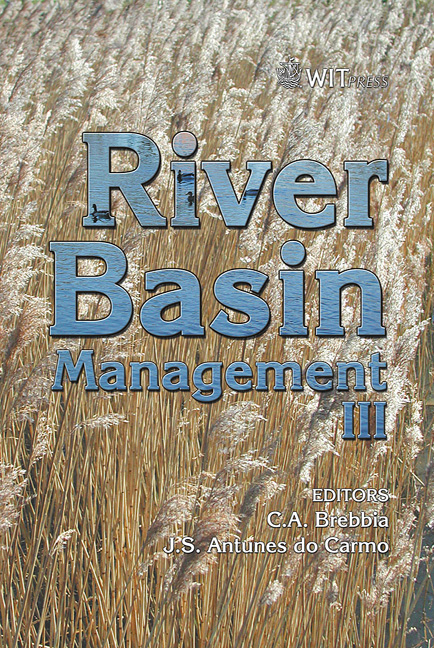Variations In Trace Elements And Suspended Solids In A Stream Under Different Hydrological Conditions: Example Of A Rural Catchment
Price
Free (open access)
Transaction
Volume
83
Pages
10
Published
2005
Size
399 kb
Paper DOI
10.2495/RM050201
Copyright
WIT Press
Author(s)
M. L. Rodríguez-Blanco, J. Villanueva-Vigo, M. M. Taboada-Castro & M. T. Taboada-Castro
Abstract
The results of metals and suspended solids obtained at the outlet of a river catchment of Galicia (NW Spain) under low and moderate flow conditions and during a rain event are shown. The dissolved metals (Al, Fe, Mn, Cu, Zn and Pb) and suspended solids under normal flow displayed sensitively lower values than under high flow conditions. During high flow the concentrations of particulates metals were higher than those of dissolved metals, these increasing with flow. So the peak of particulates coincides with maximum flow, whereas for dissolved metals, in most cases, it was reached with a certain delay. This reveals the importance of runoff as a source of particulate metals in the river course. Particulate metals constitute over 95% of the total in most cases, with the exception of zinc whose proportions, especially at the beginning and end of the event, are similar. This same behavior is observed for the rest of the metals although with smaller evidence. Keywords: trace elements, suspended solids, seasonal variation, rain event. 1 Introduction In recent years, the fluxes of trace metals from terrestrial and atmospheric sources to the aquatic environment have increased considerably [1]. In rural areas possible sources that may contribute to the input of the trace metals to rivers are domestic wastewaters, runoff from agricultural soils and from dump sites [2]. The relative importance of these sources varies according to the characteristics of the catchment. A variety of factors such as basin geology,
Keywords
trace elements, suspended solids, seasonal variation, rain event.





